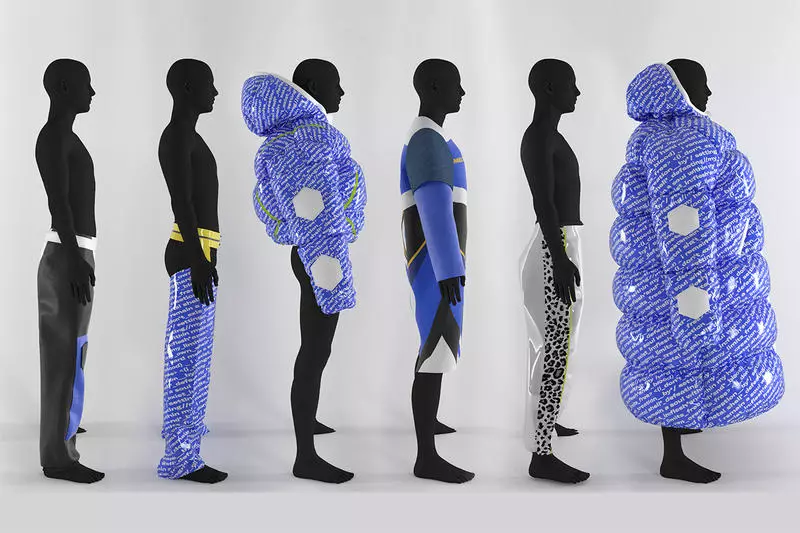If there are two fashion brands competing simultaneously for a customer’s attention today, it is highly likely that the one which is truly sustainable and not just on paper might win the game. While climate change seeded this shift in customer mindset long ago, the pandemic accelerated this transformation in their overall lifestyles. In a survey conducted by McKinsey in April 2020 among 2000 UK and German consumers, it was found that 57% of the respondents had made significant changes in their lives after the pandemic so that their choices reduced the negative impact on the environment. Now more than ever, customers want to be associated with brands who actively seek out to bring out a positive change in every possible way.
Why Should Fashion Retail Brands Be Alert Of The Eco-Conscious Consumer?
The fashion industry has always been a template industry for drastic negative impact on the environment. In the recent past, ‘fast fashion’ trends have amplified those problems. From the initial designing and sampling to the final delivery stage, the supply chain includes processes which are detrimental to the health of the environment.
So when customers are changing, the industry which utilises 98 million tons of non-renewable sources annually, needs to change, right? Changing the approach of the industry towards improving the ecological dimension directly translates to focusing on these factors:
- Wastage of water:
Imagine the amount of water wasted when making just one pair of jeans requires over 2,000 gallons of water from start-to-end! And the shortage of water is driven by the 500 thousands of tons of microplastic fibers dumped into the oceans.
- Release of fatal chemicals:
The fashion industry alone emits 1.2 billion tons of carbon dioxide, causing greater harm to the health of the people residing around those factories.
- Waste generation:
The textile industry is always criticised for its oversampling of outfits. This is because most of the samples are hardly used, have a shorter life cycle, and are dumped once their purpose is over or even if they need a minor correction.
According to the United Nations Economic Commission’s 2018 report, 20% of the global waste is generated by the fashion industry and around 21 billion tons of textile are sent to landfills.
How Can Brands Leverage Digital Fashion To Promote Sustainable Fashion
When you choose to digitise the product development process from start to end, the supply chain becomes more sustainable. Because in digital fashion, a physical sample is created only when the digital sample is assessed and finalised by the concerned members. This will ensure that no raw materials, fabrics, or other resources were unnecessarily wasted. Since the samples will be created digitally, there is lesser involvement of chemicals used unlike during creation of physical outfits. Also, if the physical sample is created after finalising the digital sample, there is minimum scope for errors, resulting in lesser chances of them being dumped in landfills.
In many cases, digital clothing would suffice the needs. This helps to reduce the number of samples generated. Making samples only when necessary and in the most optimised way will prove that your brand means it when you claim you are sustainable.

The pandemic has made customers realise which brands walk the talk and they would like to associate with brands who actually practise what they preach even if they end up paying more. Especially the newer generations are more aware of the environmental impact of their everyday choices. According to the PricewaterhouseCoopers (PwC) report “Millennials vs Generation Z”, they are the ones who are actively seeking out sustainable fashion options. 30% of the luxury buyers are young today and it is estimated that by 2025, this number will increase to 45%.
To be aligned with their interests and values, fashion brands will have to think of innovative ways to be sustainable along with being transparent of their methods. While there are multiple ways to implement sustainability, choosing tech-enabled methods could be an interesting and wise choice, considering that these generations are digital natives and will soon become a huge part of your customer base. Digital fashion will also help you to stay relevant for this audience and improve your sales by creating immersive shopping experiences for them.
Key Takeaways:
- The pandemic has placed sustainability in the forefront for customers during a purchase.
- Reports suggest that millennials and gen Z are more inclined to themes and brands which practice sustainable methods.
- Fashion brands need to be aware of this shift in customer mindset as it is an industry that is always known for creating drastic negative impacts on the environment due to their conventional supply chain.
- Adopting digital fashion is a wise decision for brands as it will serve dual purposes – attract eco-conscious customers and retain them with immersive shopping experiences.
We at Neo Marche would love to help you take the plunge into digital fashion and provide a platform where you can be effectively prepared to attract and retain this eco-conscious market segment.


